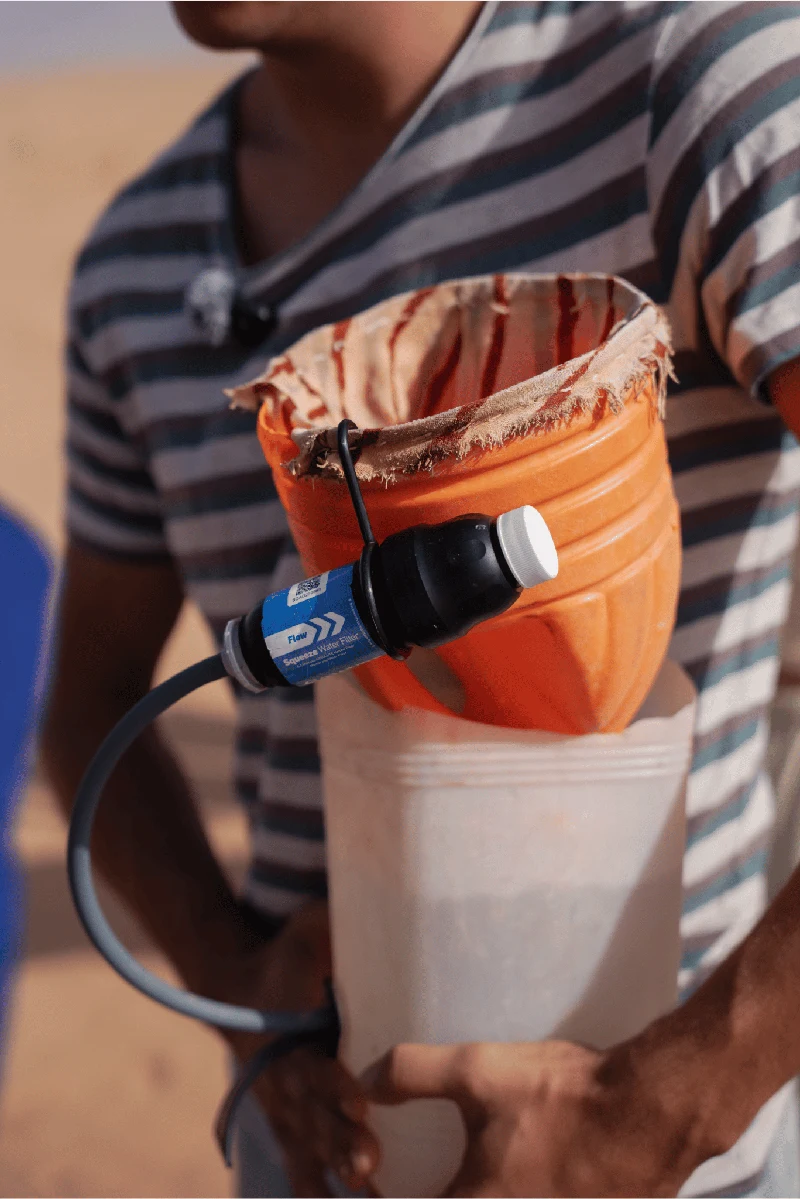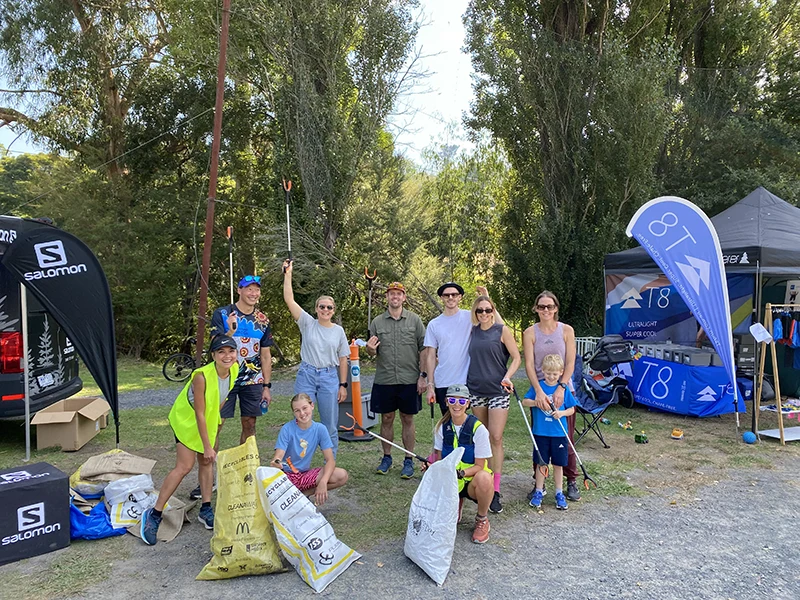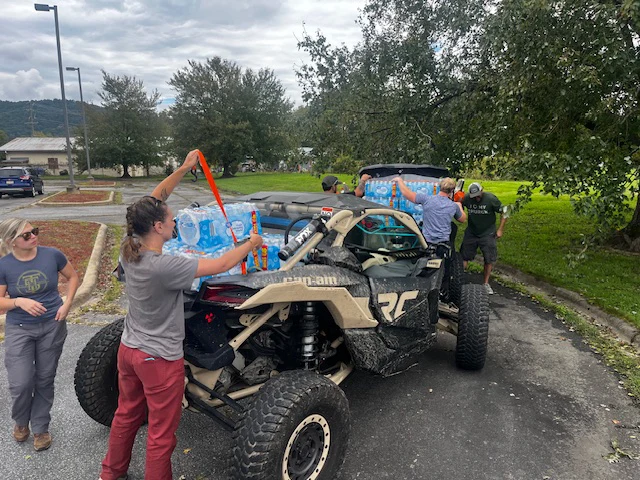

Three months before my Appalachian Trail thru-hike, I was unable to walk more than a mile. I had pushed myself too hard during an ultra-marathon. My hip had started to hurt halfway through — but I ignored the warning signs. I was angry about being trapped inside my body after experiencing sexual harassment at my first job out of college. I felt like my body needed to hurt.
It wasn’t my choice to exist inside of it. It was simply another thing beyond my control.
Laying in bed, I stared at the ceiling as I came to terms with the fact that I couldn’t lift my leg without excruciating amounts of pain. I had just quit my job. My future plans to hike 2,198.4 miles were entirely dependent upon one tool: my body. And I had just abused it.

I realized I had to radically change the way I viewed my body.
I started attending physical therapy four times a week. They gave me a stretching routine with a resistance band that I still use daily. I would repeat a series of five different exercises — squats, clamshells, sideways squats, and more — three times a day for forty repetitions each at the start of my injury. Gradually, I was able to walk again.

I realized how delicate my body could be. It deserved more respect than I had given it. The actions I took could severely impact its functionality in years to come.
I started to appreciate the little things it allowed me to do — toast everything bagels, get out of bed in the morning, watch birds, paint with watercolors.
If I wanted to continue to live an active lifestyle throughout my life and enjoy the outdoors with an agile body, I needed to start taking care of it.
When I finally approached Springer Mountain, the start of the Appalachian Trail in April, I was treating my body very differently than when I was running the ultra. I thought about every single step, each tendon that was expanding and contracting, each muscle that was tensing and relaxing. I stopped routinely to do stretches.

Although it took me all day to walk the 8-mile Approach Trail, I made it to the start of the AT at Springer Mountain, Georgia. I learned to practice gratitude for every step. Every step I took was one more than I was able to take a few months ago.
At the beginning, being able to walk and be outside on the trail I loved mattered more to me than the concept of finishing.
As I began my stretches each morning and night, I recognized that I would be inside this vessel for the rest of my life — I owed it to myself to take care of it. Each day, I felt gratitude for the rolling green mountains it allowed me to see and for the miles it allowed me to walk.

Hikers would pass me and I would pass other hikers, though I tried not to let it bother me. Being at odds with your body will never get you far in life, and I had to respect my body’s wishes. Although friends would come and go, I would always find company when I needed it most.
Tendonitis in my Achilles and plantar fasciitis became chronic injuries while I thru-hiked. Inklings of anger towards my own body would resurface as I continued. I was frustrated that I couldn’t do the same mileage as easily as some of my friends. When days like this came, I did my best to take a deep breath and realize I had to go at my own pace — or risk having to go home.
Growth is not a linear process, and neither is the relationship with your body on a thru-hike.

Instead of pushing through this pain, I would stop to soak my feet in cold water to help the swelling go down. I would time it for ten minutes, almost every day. Instead of getting frustrated by the limits of my body during these ten minutes, I would look at it as an opportunity to practice mindfulness on my hike. Tiny salamanders would poke their heads out of the streams within a couple minutes of when I first sat down. I would notice the blue delicate blooms of Forget-Me-Nots and the white petals of Trillium around the creek.
There was more to a thru-hike than just mileage. Sometimes, it’s just enjoying what’s around you.

During these breaks, I tried to recall all the positive things that happened to me that day. If I couldn’t, I would eat a Snickers bar to cheer myself up. I’d think about how grateful my body brought me as far as I was, especially when just a few months ago, I couldn’t even walk a mile. Five years ago, I would’ve been afraid to even go on a backpacking trip. There I was — in the middle of thru-hiking the AT myself.
There is no use in comparing yourself to other people, but when you compare yourself to who you were a few months ago, a year ago, or even five years ago — you’ll be amazed at how much you’ve grown.

Soon after I started the trail, another challenge presented itself: eating. I lost twenty pounds a few months in from my start date. I felt fatigued, depressed, and malnourished. Every time I sat down to eat at camp, I wanted nothing to do with my food. There were plenty of nights when I stared into my cup of ramen for thirty minutes, feeling my want to eat disappear somewhere in the squiggly noodles.
The strangest thing was — I was thrilled at the way I was starting to look. With the fat stripped from my face and abdomen, I finally looked the way I had wanted to in regular life. But I was miserable. And starving. I realized it wasn’t an attractive look for me — it was unhealthy. The irony was, at the same time I was enjoying the new shape my body was taking, I was also missing the way it used to look before trail.

One day, as I was sweating through my Buff on an uphill climb, I realized I was never going to be completely happy with the way my body looked because my body was always going to change.
Bodies are meant to change. They’re made to adapt to whatever life throws at them — just like you and me. Your body lets you watch the sunrise and sunset, listen to music, and experience the world as you make sense of it.
I was working with mine to finish the AT — and I needed to start feeding it more fuel if I wanted to make that a reality. I changed my attitude towards food and started devouring everything I could. I stuffed my fanny pack with snacks and promised myself to eat everything by the end of the day. I started drinking water every time I passed over a stream.
The more water I drank, the easier it got to eat food. I started to be happier with less brain fog and more energy.
Again, how I treated my body was how it repaid me.

Finally — after months of eating Snickers bars, practicing gratitude for salamanders, and learning to be at peace with my body and its surroundings — I stood at the top of the northern terminus of the trail on Mount Katahdin. As I hugged the sign, all I could think was thank you. The trail made me feel at home in myself again. It was the best gift I had ever received.
Even so, after I returned home, I still struggled to eat properly.
I was paranoid about post-trail weight gain. I stopped eating breakfast for a time and sometimes would skip lunch entirely.
After I was out of the woods I found myself bombarded with mirrors. I couldn’t escape my self-image. I was used to seeing it in streams that flowed by or in my phone camera — not my full body in a mirror every morning. It was too much.

I started doing my stretches again and began my job working as a lift operator at a ski resort — and in my off time, I snowboarded as much as I could.
Learning a new skill allowed me to remember to love my body for what it allowed me to do, instead of how it looked.
Bodies exist as a means to experience life. They are incredible tools to bring us from one place to the next. They will change throughout our lives — grow wrinkles, laugh lines, stretch marks, scars, varicose veins, and calluses. It’s not anything to be ashamed of. All of those marks just show that you’ve lived. That your body is a growing, changing, living thing that you get to experience the world with. Treat it kindly, love it with your life and it will let you love your life in return.

From the Squad
Campfire conversations with our community, from Squad Members and Ambassadors to Brand Partners and the Sawyer team.

















